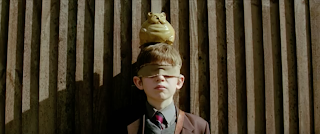On Thursday we went into the studio again with Matt and Paul to learn about the 180° rule (which I previously didn't know about), where the camera should stay within 180° of the subject in frame, as demonstrated in the picture below. An example was if you were filming two people having a conversation, you would imagine a line (the red one on the picture below) and you would only stay on one side of it. This makes continuity better because the details stay the same, and makes the work look professional, as the two actors are always on the same side. A well as this, Matt used a toy motorbike to show us that by not using the 180° rule, it looks like there are two motorbikes going in different directions when you play it back.
We set up the cameras and tripods again, and after a demonstration, filmed our own sequences. I was the 'actor' in it, where I walked onto a marker we set up, took my phone out of my pocket, checked it, put it back, and walked off. Starting with a wide shot, we went in to a mid shot, then a close up to an extreme close up of the phone. Matt told us to film the same scene repeatedly all the way through, even if we're only using a tiny amount of it because it's better to have too much than too little when it comes to footage.
Whilst filming our sequences, Matt told us that it was important to not watch our footage back because it wastes a lot of time, and if the actors see it they'll most likely want to re-do the scene differently. We has to use the proper language when shooting: 'stand by', 'rolling', 'action' and 'cut'. o keep continuity, we used the same hand to take out the phone, and from the same place on the body. I also walked in from the same direction each time.
Finally, Matt taught us about focus pulling, and how it draws attention from one object to another. It's about twisting the focus on the lens to focus on the object in question, either from foreground to background or vice versa.
 |
| One of the camera angles we used |
Finally, Matt taught us about focus pulling, and how it draws attention from one object to another. It's about twisting the focus on the lens to focus on the object in question, either from foreground to background or vice versa.
 |
| Another group doing a wide shot |

























